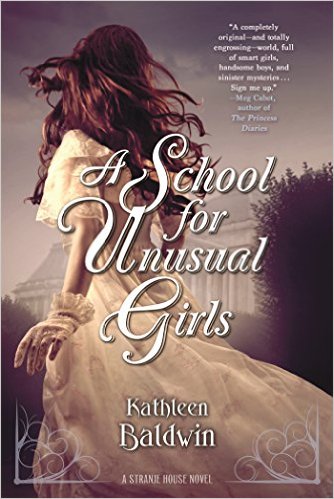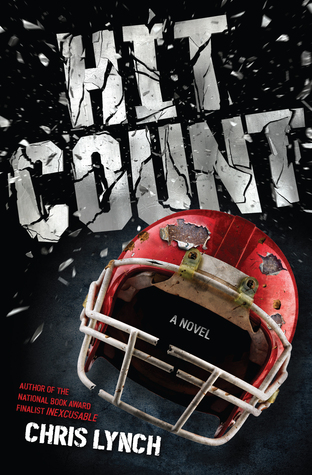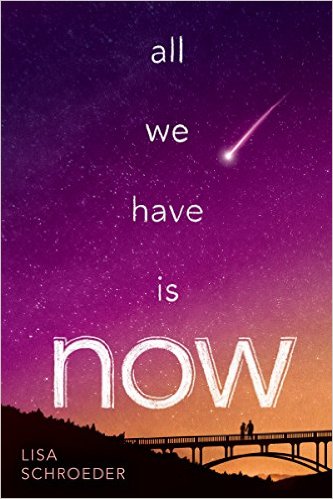ICYMI (In case you missed it) looks at books that have already been released. They’re books I feel deserve a second look even though I won’t be offering a full review on Cracking the Cover. Each book description includes a publisher’s synopsis (in italics), what others thought about the book, and my thoughts on what attracted me to it in the first place.
 “A SCHOOL FOR UNUSUAL GIRLS: A STRANJE HOUSE NOVEL,” by Kathleen Baldwin, Tor Teen, May 19, 2015, Hardcover, $17.99 (young adult)
“A SCHOOL FOR UNUSUAL GIRLS: A STRANJE HOUSE NOVEL,” by Kathleen Baldwin, Tor Teen, May 19, 2015, Hardcover, $17.99 (young adult)
It’s 1814. Napoleon is exiled on Elba. Europe is in shambles. Britain is at war on four fronts. And Stranje House, a School for Unusual Girls, has become one of Regency England’s dark little secrets. The daughters of the beau monde who don’t fit high society’s constrictive mold are banished to Stranje House to be reformed into marriageable young ladies. Or so their parents think. In truth, Headmistress Emma Stranje, the original unusual girl, has plans for the young ladies-plans that entangle the girls in the dangerous world of spies, diplomacy, and war.
After accidentally setting her father’s stables on fire while performing a scientific experiment, Miss Georgiana Fitzwilliam is sent to Stranje House. But Georgie has no intention of being turned into a simpering, pudding-headed, marriageable miss. She plans to escape as soon as possible-until she meets Lord Sebastian Wyatt. Thrust together in a desperate mission to invent a new invisible ink for the English war effort, Georgie and Sebastian must find a way to work together without losing their heads-or their hearts….
My Thoughts: I love history, and I enjoy mysteries and adventure, but what drew me to “A School for Unusual Girls” is the celebration of intelligence. The book is fast-paced and infinitely interesting. I’m looking forward to more books in this series.
Here’s what Lisa Von Drasek said about “A School For Unusual Girls” in the New York Times Sunday Book Review:
“’A School for Unusual Girls,’ by Kathleen Baldwin, is enticing from the first sentence: ‘What if Sir Isaac Newton’s parents had packed him off to a school to reform his manners?’ … Baldwin has an ear for period dialogue as she draws us into this world of sharp, smart young ladies who are actually being trained and deployed for the British war effort by the mysterious headmistress, Miss Stranje.”
 “HIT COUNT,” by Chris Lynch, Algonquin Young Readers, May 19, 2015, Hardcover, $17.95 (young adult)
“HIT COUNT,” by Chris Lynch, Algonquin Young Readers, May 19, 2015, Hardcover, $17.95 (young adult)
Arlo Brodie loves being at the heart of the action on the football field, getting hit hard and hitting back harder. That’s where he belongs, leading his team to championships, becoming “Starlo” on his way to the top. Arlo’s dad cheers him on, but his mother quotes head injury statistics and refuses to watch games. Arlo’s girlfriend tries to make him see how dangerously he’s playing; when that doesn’t work, she calls time out on their relationship. Even Arlo’s coaches begin to track his hit count, ready to pull him off the field when he nears the limit. But Arlo’s not worried about tallying collisions. The winning plays, the cheering crowds, and the adrenaline rush are enough to convince Arlo that everything is OK—in spite of the pain, the pounding, the dizziness, and the confusion.
My thoughts: I am not a fan of football, but like almost every other student at my high school, I got caught up in the excitement. I was even part of the drill team that performed at all the home and playoff games. So even though I’m not particularly interested in the sport, I am interested in what makes the players tick and how that can effect them for the rest of their lives.
Here’s some of what Paul Volponi had to say about “Hit Count” in the New York Times:
“But perhaps Lynch’s biggest accomplishment is perfectly pegging that football mentality of playing through the pain, no matter how intense, until you’re carried off the field on your shield. … In ‘Hit Count,’ Lynch offers a penetrating view into the kind of difficult situation that occurs regularly on high school fields, undocumented by any camera. He makes us feel the predicaments of the players, parents and coaches — without ever easing up on the complicated passions that drive them to stay with the game.”
 “ALL WE HAVE IS NOW,” by Lisa Schroeder, Point, July 28, 2015, Hardcover, $17.99 (young adult)
“ALL WE HAVE IS NOW,” by Lisa Schroeder, Point, July 28, 2015, Hardcover, $17.99 (young adult)
There are 27 hours and fifteen minutes left until an asteroid strikes North America, and, for Emerson and everyone else who didn’t leave, the world will end. But Emerson’s world already ended when she ran away from home last year. Since then she has lived on the streets, relying on her wits and her friend Vince to help her find places to sleep and food to eat.
The city’s quieter now that most people are gone, and no one seems to know what to do as the end approaches. But then Emerson and Vince meet Carl, who tells them that he has been granting people’s wishes. He gave his car away so a woman could take her son to see the ocean for the first time, and he gives Emerson and Vince all the money he has in his wallet.
Suddenly this last day seems full of possibility. Emerson and Vince can grant a lot of wishes in 27 hours — maybe even their own.
My thoughts: I don’t think there’s anyone who hasn’t wondered “what if?” But I wonder how many people have turned the negative around as the main characters in “All We Have is Now” do. It’s an intriguing idea.
Here’s what Kirkus had to say about “All We Have is Now”:
“Schroeder also focuses on the positive in this spin on the end-times theme. Interspersed snatches of free verse express the emotions of her characters and make her point that life is best lived in the moment. If the book’s conclusion takes some liberties with coincidence, who cares?”
